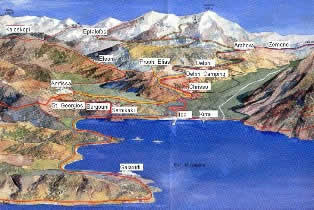Delphi - Greece lying 176km (109 miles) northwest of Athens, Delphi can be reached by road via Livadia and Arahova. This is the site of the famous Oracle, where rulers of ancient Greece came for many centuries for political and moral guidance.
Where is Delphi Greece
The complex of treasury buildings, plinths and the foundations for the fourth-century BC Temple of Apollo are set on the steep rocky hillside, overlooking olive groves and the Sanctuary of Athena, known as the Marmaria (marbles). A steep uphill climb from the Temple brings one to the theater, offering stunning views over the entire site, and further uphill still lies the ancient stadium. The Delphi Museum contains a superb collection of finds from the site.
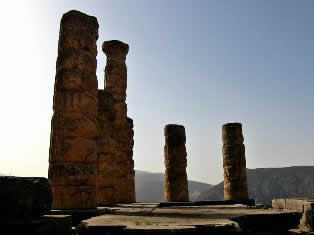 Temple of Apollo god in Delphi - Greece
Temple of Apollo god in Delphi - Greece
West of Castalia along the main road , we arrive shortly at the official Sanctuary of Delphi, that of Apollo. This occupied a large area on the steep hillside of Parnassus. Since the ground was so very sloping, five artificial terraces had to be constructed to provide suitable levels for the buildings. They were one above the other supported by strong wals. The numerous edifices, statues, columns and so forth were thus shown off to the best advantage with the mass of Parnassus as a majestic background.
The sacred area, the Sancuary of Apollo was encircled by a wall with many entrances. But the main one was at the SE point of the enclosure, outside which was was artificially paved space of the Agora, with remains of Roman buildings. As soon as we passed the main entrance the paved path-way begins which was known as the sacred way. The sacred way on its twisting ascent passes the temple of Apollo and ends opposite the theatre. To right and left of it were many dedicational buildings set up either by private individuals or by different Greek cities.
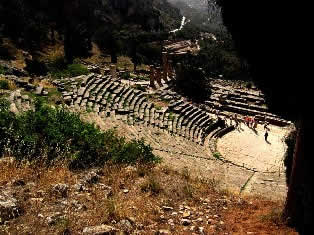
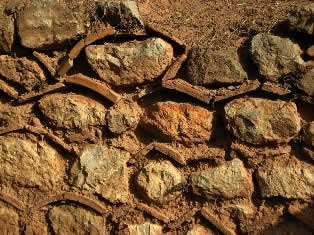
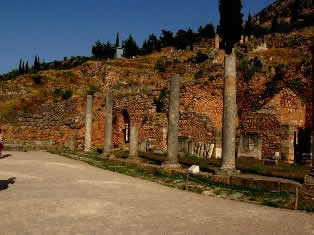
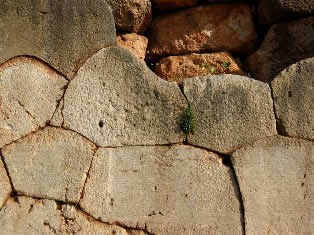
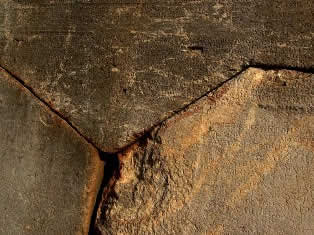
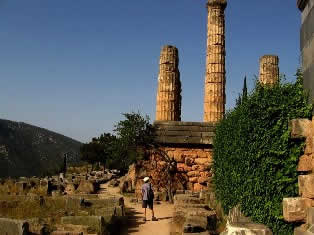
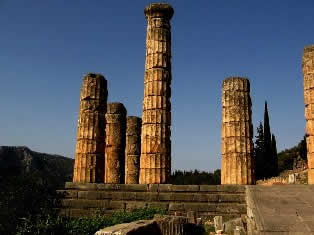
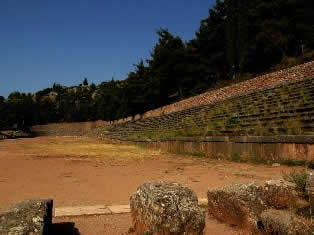
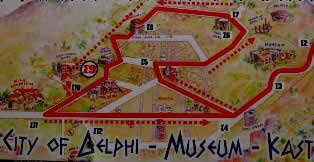
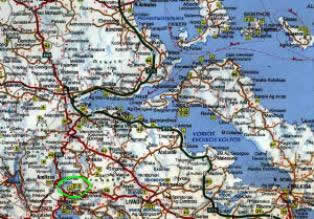
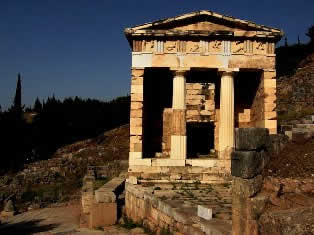
Walking through the ruins of ancient Delphi
Walking up the Sacred way which follows the same course as it did in antiquity we come to a row of small buildings more or less alike and known as Treasuries.
They were like small temples with two columns on the facade and an enclosure. Some moreover were architectural gems. They were used mainly for guarding the precious dedicated offerings of the different cities. Similar treasuries are to be found in many ancient sancturies as at Olyimpia for example.
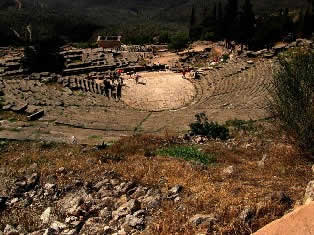 Delphi - ancient centre of the world
Delphi - ancient centre of the world
Many people don't even know why they are going there. It's just something they know they are supposed to do when they go to Greece. But for those people who read, Delphi has a special meaning, more than just another collection of ruins in a country that is full of them.Delphi in ancient times was considered the centre of the known world, the place where heaven and earth met. This was the place on earth where man was closest to the gods. In Mythology, Delphi was the meeting place of two eagles, released by Zeus and sent in opposite directions. Where they met indicated the center of the earth and this decorated omphalos marked the exact spot.Around 1400 BCE, Zeus loosed two eagles in opposite directions; each flew around the globe and met at Delphi, thus defining it as the navel of the world and one of the holiest places in Greece.According to Homer, Apollo later arrived at Delphi, shaped as a dolphin carrying Cretan priests. Another myth claims that he came to slay the Python, an (even more) ancient protector of the navel. I prefer to believe that Apollo killed the Python while in the form of a dolphin, thus earning himself the dedication of Delphi. Pilgrims from all over Greece came to ask questions from his priestess, the Pythia. She inhaled gases released from the ground and then, as my dad says, “zapped out of her gourd” high, give her answer to a priest, who then interpreted for the asker. Her answers were always ambiguous enough that the oracle was never wrong, and the priestesses prophesied from Delphi until the Roman emperor shut them down in 395 CE. Then, during the Middle Ages, the village of Kastri was built on the site, using the ruins as foundations for structures. After a series of earthquakes the ancient ruins were buried, but Kastri was rebuilt. When the site was discovered in the 19th century, the villagers resisted moving to allow excavations. However, the Greek government eventually offered a new village west of the site, Kastri moved, and French archeologists began excavating in 1893.
